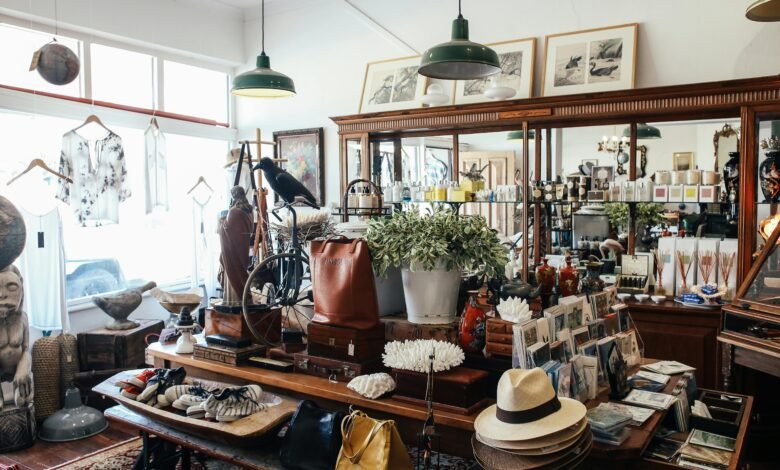Second Hand Bags With Heritage – A Sustainable Fashion Choice

In the world of fashion, second-hand bags with heritage are more than just accessories—they are timeless investments that carry history, craftsmanship, and sustainability. Luxury brands like Louis Vuitton, Chanel, Hermès, and Gucci produce handbags that often appreciate in value over time, making pre-owned pieces highly sought after. Beyond their financial worth, vintage and second-hand bags tell a story, featuring unique patinas, discontinued designs, and rare materials that modern collections may no longer offer. For eco-conscious shoppers, buying pre-loved also reduces environmental impact by promoting circular fashion. Whether you’re a collector, a fashion enthusiast, or someone looking for an affordable entry into luxury, second-hand heritage bags offer style, value, and sustainability.
Headings and Their Explanations
The Allure of Vintage and Second-Hand Luxury Bags
Owning a second-hand luxury bag is like possessing a piece of fashion history. Brands such as Hermès Birkins, Chanel Classic Flaps, and Louis Vuitton Speedy have iconic designs that remain relevant decades after their release. Vintage bags often feature superior craftsmanship, with details like hand-stitched leather and solid brass hardware that are sometimes replaced with lighter, less durable materials in modern versions. Additionally, discontinued styles and limited-edition releases become collector’s items, often selling for much higher prices on the resale market. The charm of a pre-owned bag also lies in its “lived-in” look—softened leather, natural distressing, and a unique patina that new bags simply cannot replicate.
Why Second-Hand Bags Are a Smart Investment
Unlike fast-fashion accessories that lose value quickly, high-end pre-owned bags often retain or even increase in worth over time. For example, a Chanel 2.55 bag purchased in the 1990s can now sell for double or triple its original price due to rarity and demand. The Hermès Birkin and Kelly bags are known to appreciate annually, sometimes outperforming traditional investments like stocks. Buying second-hand also allows entry into luxury at a lower price point—many gently used designer bags are available at 30-50% off retail prices. Platforms like The RealReal, Vestiaire Collective, and Fashionphile authenticate products, ensuring buyers get genuine items without the risk of counterfeits.
How to Authenticate a Pre-Owned Designer Bag
One of the biggest concerns when buying second-hand luxury bags is avoiding counterfeit products. Key authentication steps include examining the stitching (luxury brands use even, tight stitching), checking date codes or serial numbers, and assessing the quality of materials (real leather ages differently from synthetic alternatives). Hardware should have weight and engravings that match the brand’s standards. For high-value purchases, using a third-party authentication service like Entrupy or Authenticate First adds an extra layer of security. Researching specific brand hallmarks—such as Louis Vuitton’s heat stamps or Chanel’s hologram stickers—can also help distinguish real pieces from fakes.
Top Heritage Bags That Gain Value Over Time
Certain luxury bags are known for their investment potential and timeless appeal. The Hermès Birkin, with its exclusive craftsmanship and years-long waitlists, consistently appreciates in resale value. The Chanel Classic Flap, especially in caviar leather, remains a staple in the resale market due to its enduring popularity. Louis Vuitton’s Speedy and Neverfull models are highly durable and maintain strong resale demand. Even lesser-known gems like Bottega Veneta’s Intrecciato weave bags or Prada’s nylon re-editions are gaining traction among collectors. Choosing the right model depends on factors like rarity, condition, and market trends—making research essential before purchasing.
Sustainable Fashion: The Environmental Impact of Buying Second-Hand
The fashion industry is one of the largest polluters globally, with fast fashion contributing to textile waste and carbon emissions. By opting for pre-owned luxury bags, consumers help reduce waste, lower demand for new production, and extend the lifecycle of high-quality materials. Unlike mass-produced accessories, heritage bags are built to last, often remaining functional and stylish for decades. Thrifting and resale platforms also promote a circular economy, where items are reused rather than discarded. For eco-conscious buyers, choosing vintage or second-hand is not just a style statement—it’s a step toward ethical and sustainable fashion consumption.
Conclusion
Second-hand bags with heritage offer a perfect blend of style, history, and sustainability. Whether you’re drawn to the investment potential of a Hermès Birkin, the timeless elegance of a Chanel Classic Flap, or the durability of a Louis Vuitton Speedy, pre-owned luxury bags provide unmatched value. Beyond aesthetics, buying second-hand supports eco-friendly fashion practices, reduces waste, and allows access to rare, discontinued designs. With proper authentication and careful selection, a vintage or pre-loved bag can become a treasured heirloom—one that tells a story while making a positive impact on both your wardrobe and the planet.
